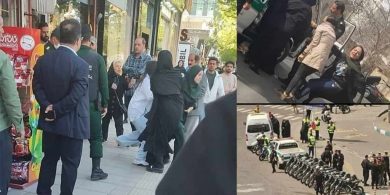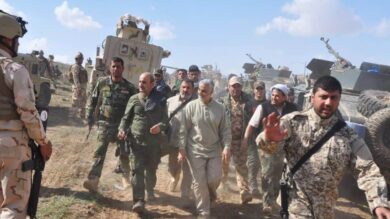For decades, the mandatory hijab has been a symbol of state control over women’s bodies in Iran. However, the struggle for women’s rights extends far beyond clothing regulations. Iranian women are fighting against systemic discrimination, legal inequalities, and state-sponsored repression enforced by institutions like the Islamic Revolutionary Guard Corps (IRGC).
The Women, Life, Freedom movement has drawn global attention to the ongoing resistance of Iranian women. While the hijab is a visible sign of oppression, the battle for gender equality encompasses issues like legal discrimination, economic exclusion, domestic violence, political participation, and freedom of expression.
This article examines:
• The roots of gender discrimination in Iran.
• The IRGC’s role in enforcing women’s oppression.
• Key struggles beyond the hijab, including legal, social, and economic inequalities.
• The resilience of Iranian women in defying these restrictions.
• How global solidarity can support Iranian women’s fight for fundamental rights.
1. The Systemic Nature of Gender Oppression in Iran
A. The Hijab as a Tool of Control
The Iranian government, under the control of hardline clerics and the IRGC, has long used the mandatory hijab law as a political tool to:
• Monitor and control women’s presence in public spaces.
• Punish defiance with arrests, beatings, and imprisonment.
• Suppress broader movements for women’s rights under the guise of enforcing “Islamic values.”
Despite this repression, Iranian women’s defiance has grown, with many refusing to comply with compulsory hijab laws, signaling a broader demand for bodily autonomy and freedom.
B. The IRGC’s Role in Enforcing Gender Apartheid
The IRGC and its affiliated forces, including the morality police (Gasht-e Ershad) and the Basij militia, play a central role in enforcing gender-based oppression. Their tactics include:
• Surveillance and digital monitoring of women activists.
• Arresting and torturing women who challenge state-mandated dress codes.
• Blocking women’s access to public platforms, education, and economic opportunities.
• Orchestrating smear campaigns against women activists, journalists, and dissidents.
The IRGC’s systemic crackdown on women demonstrates that oppression in Iran is not just about hijab laws—it is about controlling every aspect of women’s lives.
2. Beyond the Hijab: Key Struggles for Iranian Women
A. Legal Discrimination and Inequality
Iranian law treats women as second-class citizens, denying them basic rights in several key areas:
1. Marriage and Divorce Laws
• Women need a male guardian’s permission to marry.
• Men can divorce their wives freely, while women must prove fault to request divorce.
• Custody laws favor fathers and male relatives, limiting mothers’ rights over their children.
2. Inheritance Laws
• Women inherit half the amount men receive under Iran’s legal system.
• Widows often face economic hardships due to discriminatory inheritance laws.
3. Testimony in Court
• A woman’s testimony is worth half that of a man’s in legal proceedings.
• Women struggle to seek justice for crimes like domestic abuse and rape.
These laws reinforce male dominance, making women dependent on male guardianship in both private and public life.
B. Economic Marginalization and Workplace Discrimination
Despite being highly educated, Iranian women face severe economic discrimination:
• Women make up the majority of university graduates but hold less than 20% of jobs.
• Employers often refuse to hire women to avoid legal complications related to maternity leave and family laws.
• The IRGC controls large sectors of Iran’s economy, blocking women from leadership roles.
• Female entrepreneurs face barriers in accessing financial resources and starting businesses.
Economic independence is key to women’s empowerment, yet the regime actively prevents financial autonomy as a means of controlling women’s lives.
C. Violence Against Women: A State-Sanctioned Crisis
Domestic violence, honor killings, and state-backed oppression make violence against women a widespread crisis in Iran.
1. Lack of Legal Protection
• Iran has no comprehensive law criminalizing domestic violence.
• Honor killings go unpunished, with male family members receiving light sentences for murdering female relatives.
• Victims of rape and sexual violence often face blame, social stigma, and legal obstacles in seeking justice.
2. IRGC’s Role in Perpetuating Violence
• The IRGC suppresses feminist activists, labeling them as threats to national security.
• Women in IRGC-run prisons, like Evin and Qarchak, face sexual violence and psychological abuse.
• The regime imprisons women for speaking out, turning survivors into targets of further repression.
Despite these dangers, women continue to resist—raising awareness, organizing protests, and fighting for legal reforms.
D. Political Exclusion: Silencing Women’s Voices
Women are systematically excluded from political leadership in Iran.
• Women are barred from running for president and are rarely appointed to high-ranking government positions.
• The IRGC manipulates elections, ensuring only conservative, male-dominated leadership remains in power.
• Female activists and politicians who speak out face arrest, exile, or assassination attempts.
Without political representation, Iranian women’s demands for change are consistently ignored by the state.
3. The Women Leading Iran’s Resistance
Despite repression, Iranian women continue to fight for their rights. Key figures include:
• Narges Mohammadi – Nobel Peace Prize laureate and human rights activist, imprisoned for opposing the death penalty and fighting for women’s rights.
• Nasrin Sotoudeh – A lawyer who defends women activists and political prisoners, despite being arrested and sentenced to 38 years in prison.
• Masih Alinejad – An exiled journalist and digital activist who leads the #MyStealthyFreedom and #WhiteWednesdays campaigns against the compulsory hijab.
These women embody resistance, proving that despite arrests, threats, and exile, the fight for gender equality in Iran continues.
4. How the World Can Support Iranian Women
A. Amplifying Their Voices
• International media must cover women’s rights violations in Iran.
• Social media activism (hashtags like #WomenLifeFreedom) keeps attention on Iran’s women-led movement.
B. Imposing Targeted Sanctions
• Governments should sanction IRGC officials responsible for gender oppression.
• The global community must demand Iran’s compliance with international women’s rights conventions.
C. Providing Digital and Legal Support
• Tech companies should support secure internet access to bypass Iranian state censorship.
• Human rights organizations must assist detained women activists and provide legal aid.
Conclusion: The Fight Goes Beyond the Hijab
The mandatory hijab is only one part of a larger struggle for women’s rights in Iran. The real fight is for:
✔ Legal equality
✔ Economic independence
✔ Freedom from gender-based violence
✔ Political representation
Despite IRGC repression, Iranian women remain unbreakable, leading a movement that challenges the regime’s foundations. The world must stand in solidarity, ensuring their voices are heard and their struggle for equality succeeds.
Join Our Newsletter!
Stay informed with the latest updates, news, and ways to take action in the fight for justice and global security. Sign up now to get updates delivered straight to your inbox!




